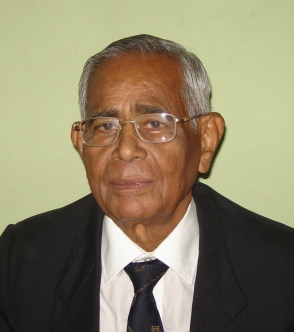Scope of Wind Energy to Replace Fossil Fuels

Padmashree Prof. Dr. P. K. Jena
The civilized world of today needs energy in various sectors like transport, industries, agriculture and domestic. At present, a large amount of energy in different parts of the world is derived for these purposes from fossil fuels causing a lot of environmental pollution and global warming due to release of poisonous gases like carbon dioxide, oxides of nitrogen and sulphur along with particulate matters. In view of various harmful effects caused due to these to all living beings, all over the world efforts are being made to utilize clean and renewable energy from sources like wind, sun, biogas, small hydro power, nuclear and geothermal. In addition to this, due to rapid growth of industries, transport systems and other energy consuming sectors, electricity shortage has been found to be very common particularly in developing countries like India. At present, in India nearly 40% of the population have no direct access to energy services. The electricity demand is expected to rise nearly 7.4% per year for the next 2 to 3 decades.
In view of this, in recent years, more efforts are being made to harness energy from wind in a much bigger way compared to other renewable energy sources because of certain advantages over other forms of renewable energy. Wind power is the conversion of wind energy into a useful form of energy, such as using wind turbines to make electrical power, windmills for mechanical power, wind pumps for water pumping or drainage etc.
Wind is caused due to uneven heating of the atmosphere by some irregularities of the earth surface and rotation of the earth. Long since, human beings have been using wind energy for different purposes like sailing boats, pumping water, grinding mills and also lately generating electricity. The modern wind turbine is based on the principle of converting energy of the wind into electrical energy. In the year 2013, the global wind energy investment ranged from 70 billion to 130 billion US dollars and it was expected to rise between 101 billion and 250 billion in 2020. There is a great scope for production and utilization of wind energy particularly in countries like Mexico, Brazil, South Africa, India, China and USA. Wind power being plentiful and renewable can replace a large amount of fossil fuels which are great nuisance for us as well as other living beings as these release a lot of hazardous gases causing environment pollution and global warming. The merits of wind power are, it is plentiful, renewable, widely distributed, clean, no cost for the fuel and its use requires little land.
Some of the important advantages in harnessing wind energy and the technology developed are summarized below:
1. There is enormous scope to harness wind energy at different places on the earth surface at different heights.
2. There is a scope to locate wind power project in areas away from human habitations, forests, precious land space etc.
3. Wind power promotes rural prosperity through supplying energy for lighting the houses and streets, drawning water for irrigation and domestic purposes and also establishing small and medium scale industries.
4. Unlike harnessing energy from fossil fuels, wind power does not need any fresh water. It is reported that, it can cut the wider use in power sectors by 23% and reduce fresh water withdraw by 15%.
5. As the wind energy harnessing units do not produce any global warming gases, there is a lot of benefits including maintaining good public health with fewer prematured death, Asthma attack and other respiratory and cardiac illness.
6. By using modern technology, harnessing wind energy can be competitive to that generated from fossil fuel. A report has suggested that, in USA by getting 35% of electricity from wind power it would be possible to reduce electric cost by 2.3 cents per kilowatt (Kw) per hour by 2050 and the public health benefit will be another 0.9 cents per Kw.
7. The modern wind turbine has many advantages at places where the transmission infrastructure is not fully developed. It is modular and easy to install matching to electricity supply and demand.
8. Wind power is flexible and it can be installed with different capacities to meet the household needs like lighting and refrigeration, computers, television etc.
9. Small wind turbines are gaining popularity due to the economic way to bring the benefits of power production to individual houses, villages and industries, which are away from the established grid.
10. To harness energy from a wind mill, the installation of the unit is less capital intensive and simple in construction and also can be operated and maintained by the local people easily.
11. At present, the wind power generation capacity has increased from 26,000 MW in 2001 to 507,000 MW in 2010 and it can be connected to the grid or can be operated in isolation. There are two operating modes of wind turbine generating systems, the fixed speed operating mode and the variable speed operating mode.
12. The wind turbine has many advantages where the transmission infrastructure is not fully developed and can be installed very easily to supply according to the demand of electricity. Small wind turbines are gaining popularity as it can bring benefits to villages, schools, hospitals and also some industries which are away from established grid.
13. Large wind turbines which have been recently developed with better technology can be price competitive with any other form of energy.
In view of these, there is a great scope on this earth to harness wind energy at different places and at different heights and it is also possible to locate wind power projects in areas away from human habitation, forests, precious land space etc. Wind energy being a clean one, it has got a lot of benefits in minimizing the release of green house gases and mitigating global warming. By using modern technology it is possible to harness wind energy with a competitive price with that generated from fossil fuel. In view of these, all over the world efforts are being made to harness wind power using advance technology so that it can replace fossil fuels based polluting energy.
(The writer is Former Director General, Council of Scientific & Industrial Research, India. He is also Chairman, Institute of Advance Technology & Environmental Studies (IATES) and President, Natural Resources Development Foundation (NRDF))





